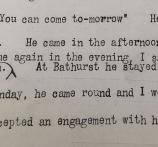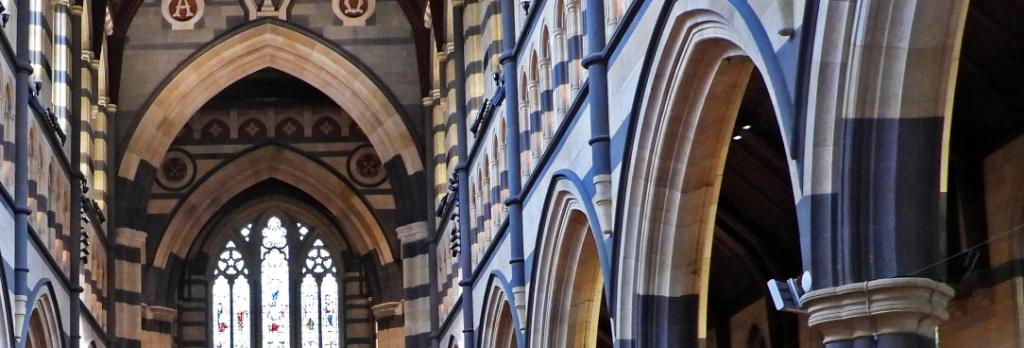Last updated:
Refereed articles

cutting a niche in the stone industry
Expand SummaryBluestone is an iconic, durable and valuable Victorian building material, recognised in state and local heritage registers and overlays. In 2024, Malmsbury Bluestone became Australia’s first designated Global Heritage Stone Resource (GHSR) through UNESCO’s Heritage Stone Sub-Commission, managed by the International Union of Geological Sciences. A key factor in the success of the nomination was the wide use of the stone throughout Victoria, several other Australian colonies and New Zealand. This was driven by the introduction of stone sawing technology in Victoria in the 1860s by stonemasons Thomas Glaister and Thomas Gamon. These men were not only pioneers of the eight-hour day in Victoria, but also formed a little-known cooperative of masons who, working independently of capitalists, won some key government contracts for structures now listed on the Victorian Heritage Register. Their innovations in mechanical sawing of Malmsbury Bluestone enabled Melbourne’s streets to be paved with this durable stone, and their cooperative created jobs and exports and vertically integrated the industry to keep out the capitalists and uphold the quality of their work.
The social and cultural heritage of stoneworkers is inherent in the structures they create, as is their labour history, yet most heritage citations barely recognise the stone itself, let alone the labour of those who create the structures. Using Malmsbury Bluestone as an example, a focus on geoheritage via the GHSR designation program (in which stone is the centre of attention) uncovers the cultural and social history of the stones used to build cities, more so than concentrating on architecture alone. Glaister and Gamon might blur the lines between labour and capitalism, but they are also an example of the success of the eight-hour day. Their interactions with bluestone deserve more than a passing mention in Victoria’s built and cultural heritage.

searching for the women in the Western Gaol 1854–58
Expand SummaryFemale prisoners in Melbourne were incarcerated in the Western Gaol on Collins Street from 1854. Drawing upon archival and newspaper sources, this article explores the history of the Western Gaol from 1854 to 1858 and describes its repurposing and renovation as a female gaol in gold rush–era Melbourne. Archival sources provide insights into the administration of the gaol and its built history and provide glimpses of the women and their lives in the gaol. My research suggests that the Western Gaol played a contradictory role in the lives of women, both as a place of punishment and, at times, of refuge for the poor, the sick, the homeless and children.
Forum articles

Exploring the Carpenter family’s saga via Public Record Office Victoria reveals a vivid tapestry beyond basic genealogical sources such as birth, marriage and death records. Richard Snr and Maria Carpenter, immigrants from England, anchor this narrative, with their descendants’ lives unfolding against the backdrop of nineteenth- and early twentieth-century Victoria. The story focuses on three of their children, Richard Jnr, William and Elizabeth. Their lives were documented in meticulous archival records, reflecting a complex history of mental health issues and interactions with numerous institutions during their lifetimes. Through the lens of the state archives—court records, ward registers, asylum reports, shipping records, probate records, rate records and gazettes—the Carpenter family is transformed into a vibrant narrative of migration, survival, adversity, resilience and controversy in colonial Australia.
Disclaimer: This article includes language and descriptions that reflect the attitudes and terminology of the historical period it discusses. Some terms, such as ‘lunatic’ and ‘maniacal’, as well as other expressions, were sourced from contemporary documents and may be considered offensive or distressing by today’s standards. The inclusion of these terms is intended solely to provide an accurate representation of the historical context and does not reflect the views or beliefs of the author. Reader discretion is advised.

Kate Rounsefell’s story
Expand SummaryWhile reading the 1892 Capital Case of Frederick Bailey Deeming held at Public Record Office Victoria, I was struck by the testimony of Kate Rounsefell. A single woman at the time, with a myriad of bad dating experiences behind me, I sympathised with Kate, a young woman who, for a fleeting moment, thought she had found a life partner—only to discover that her fiancé was a murderer, seemingly plotting to make her not just his next wife, but also his next victim. She was the subject of judgement and ridicule, particularly by newspapers of the time. I felt so deeply for her and wanted to know more. Most importantly, what happened to her after the case was closed? Not much has been written from Kate’s perspective. In fact, in a recent retelling, she was forgotten altogether! So, I dove into public records, newspapers and other sources to piece together a fuller picture of ‘the one who got away’.
Warning: this story contains records related to crime and murder and may be upsetting for some readers.

Who was Armstrong?
Expand SummaryA major new residential development to the south-west of Geelong, the Armstrong Creek Urban Growth Area, is located on an old pastoral run licenced to John Armstrong. While his name is permanently inscribed in this development, the history of John Armstrong and his family is less well known. Early squatter occupations throughout Victoria were often poorly recorded. In this article, the historic maps collection at Public Record Office Victoria, together with a variety of other official and informal sources, is used to document Armstrong’s history and to identify his early land holdings, which stretched well beyond that of the current growth area. Arriving as a bounty immigrant shepherd, John Armstrong became first a valued overseer, then a large pastoralist with leases throughout Victoria, before finally becoming a respected landowner and emerging community leader. He lay the foundations that allowed his 12 children to also become prosperous graziers and community leaders in various parts of the country.
Material in the Public Record Office Victoria archival collection contains words and descriptions that reflect attitudes and government policies at different times which may be insensitive and upsetting
Aboriginal and Torres Strait Islander Peoples should be aware the collection and website may contain images, voices and names of deceased persons.
PROV provides advice to researchers wishing to access, publish or re-use records about Aboriginal Peoples
